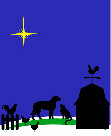Wildlife Adventures: Snapping Turtle

Living in the country is always an adventure of some kind and today was no different. I wasn’t even dressed for outside when the adventure started with the dogs out in the backyard alerting to a stranger in their territory. Looking out the bathroom window I spied the largest turtle I’ve seen here on our property.

To keep the dogs from breaking the fence down to get at the intruder, I hurriedly dressed and ran outside with a box, planning to grab the turtle and transport it in the box back to the pond where it belonged. What I didn’t realize when I saw the turtle’s shell from inside the house was that this wasn’t just any turtle that would pull its head and legs back into its shell and let me pick it up.
Immediately upon walking near the turtle, the thing tried to attack me. I have never seen a turtle move THAT fast. It’s been a while since I moved that fast too! Having a rapidly approaching turtle hissing at me while snapping its beak trying to chomp on me, got me moving backwards in a hurry.
After a few choice words at the turtle I realized that not only was this a snapping turtle, but it was not going to be as easy to relocate as the tortoises and turtles I normally have encountered. I tried to come from behind it to grab its tail and the back end of the shell, only to have it lunge at me and actually bring the front portion of its body off the ground. No matter which way I moved, it would turn to face me head on and continued to hiss, snap, lunge, and even run toward me. Who’d have thought a turtle could run? Obviously the box I had brought to put the turtle in was no match for this large, heavy, and aggressive beast.

Once a 5 gallon bucket and a shovel was retrieved, I went back to face this monster. He was heavy, at least 10 pounds. Trying to get near it with the shovel, even from behind, I was met with an increasingly aggressive turtle who attacked the shovel and latched onto the shovel blade with his beak. I had to yank the shovel away to get it out of the grasp of its beak.
I finally managed to flip the thing on its back and farther away from the fence so I had more room to work. What astounded me was how quickly that turtle managed to right itself. It was on its back for less than a minute before it was quite easily able to use its strong neck and legs to flip itself over onto the right side.
Eventually the turtle was scooped, headfirst, into the 5 gallon bucket using the shovel. For a size comparison, the turtle just barely fit into the bucket side-to-side with its shell. And for its length – several inches of its shell, basically its “crotch” and legs and tail were sticking out of the bucket. Its head and neck was about as big around as my wrist. It kept trying to right itself inside the bucket but fortunately there wasn’t enough room for it to get itself turned over, otherwise it probably would have come out of that bucket and bitten me.

The trip down to the pond seemed to take forever, even though it was relatively fast using the golf cart. I drove sitting sideways to keep an eye on the turtle in the back of the cart. There was so much noise coming from that bucket I was worried it was going to figure out how to get out or at least tip the bucket over and then attack me from behind.
Down at the pond, the turtle was shaken out of the bucket into tall grass where the pond has exceeded its bank (we’ve had 9 inches of rain in the last two weeks). It was still angry but seemed happier to be out of the bucket and fortunately did not try to attack me again. I left it alone and when I went back a few minutes later to check on things, the turtle had disappeared.
While I’m glad that our property has diverse wildlife, I am a bit worried that this big snapper might hurt one of our guineas or chickens that sometimes enjoy wading in the shallow parts of the pond. Hopefully our chickens and guineas will steer clear of this sucker’s powerful beak when they go wading.
To learn a bit more about snapping turtles, you can check out this info on the Herps of Texas webpage. Texas Parks and Wildlife has a PDF you can download to learn more about Texas turtles.
According to what I’ve learned, this snapper here at our place is a common snapping turtle, not an alligator snapping turtle. If it had been an alligator snapper, I would have reported it to Parks and Wildlife. Alligator snappers are a threatened species and are being studied by the biologists at TPWD.
Learning to live in harmony with wildlife is never dull. It can be difficult, but most of the time it is rewarding. And fortunately, no injuries occurred to humans, turtles, or dogs with our wildlife adventure today.















